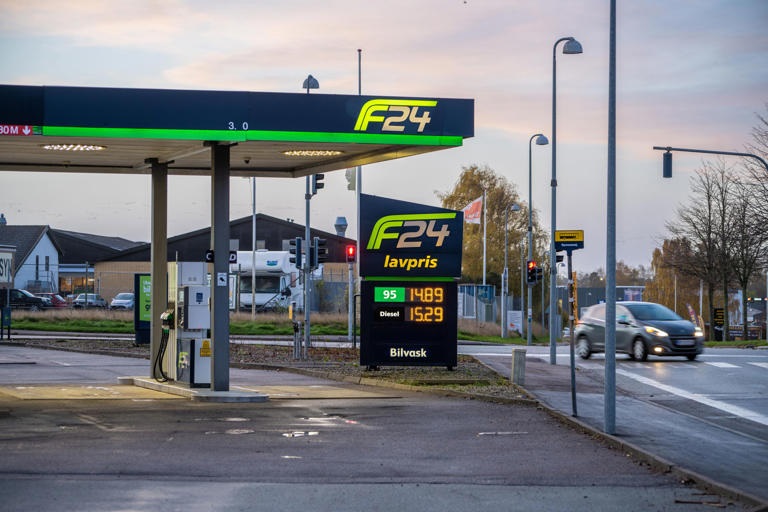Increase in Fuel Tax from the New Year – How Much Will it be?
From the beginning of the new year, it will become more expensive for car owners in the country to fill up their vehicles.
Starting in 2024, the tax on gasoline and diesel will increase by 7.7 per cent. This means that the tax on a liter of gasoline will increase by approximately 33 cent without VAT and around 41 cent with VAT. The increase for diesel will be slightly less.
The reason can be traced back to a 14-year-old tax reform, where the indexing of energy taxes – meaning that the tax amount follows the price development in society – was part of the so-called “Spring Package 2.0” in 2009. At that time, it was agreed that the rates would be adjusted based on the net price index’s annual average for the two years preceding the calendar year in question. This means that the increase in 2024 will be calculated based on the annual average for 2022. Until now, energy taxes have been indexed by 1.8 percent annually. However, since inflation has been exceptionally high in recent years, the energy tax will take a larger leap of 7.7 percent in 2024. FDM (the Danish Automobile Association) also expects a similar increase in 2025, as inflation has also been higher in 2023.
How Much Will You Pay in Taxes?
The total price of gasoline and diesel currently consists of several components. There is the actual product price of the fuel, as well as an energy tax and a CO2 tax. In addition, there is a 25 percent VAT.
While the product price and the VAT are dynamic, the energy and CO2 taxes remain fixed. Currently, for gasoline, the energy tax is 4.35 kroner per liter, while the CO2 tax is 0.39 kroner per liter. If a liter of gasoline costs 15 kroner, then 7.26 kroner goes towards the actual gasoline, while the total taxes amount to 4.74 kroner and the VAT is three kroner. But from the new year, the energy tax will increase by 7.7 percent, which is approximately 33 cent without VAT.
Therefore, from January 1st, a liter of gasoline priced at 15 kroner will cost 15.41 kroner, as not only the energy tax increases, but so does the VAT.
For diesel fuel, the energy tax of 2.85 kroner will increase by approximately 27 cent with VAT, while the CO2 tax will remain at 45 cent.
Impact on Commuters
Most people may have forgotten about the consequences of an agreement made in 2009, which will result in a significant increase in the energy tax starting from 2024. This increase will be noticeable at gas pumps. According to Ilyas Dogru, a consumer economist at FDM, if someone drives 20,000 km per year, the energy tax alone, including VAT, will increase by approximately 515 kroner.
The higher energy tax will be introduced on the same day as the new rates for mileage deduction and transportation allowance come into effect.
In 2024, the mileage deduction will increase by four cent per km, and the transportation allowance will increase by six øre. This is despite the fact that the Danish Tax Council, which determines these rates, assumes a gasoline price of 15.94 kr./l and expects the costs of car maintenance and service to increase slightly.
“We have long criticized the mileage deduction rates for being too low. It doesn’t get any better when the energy tax hits at gas stations. We find it difficult to see that the Tax Council should have taken into account the consequences of a tax hike in the mileage deduction rates for 2024, especially when the council itself highlights that it will become more expensive to own a car in 2024. Overall, this means that it will be more expensive for many people to commute and provide their car for work purposes,” says Ilyas Dogru.













































